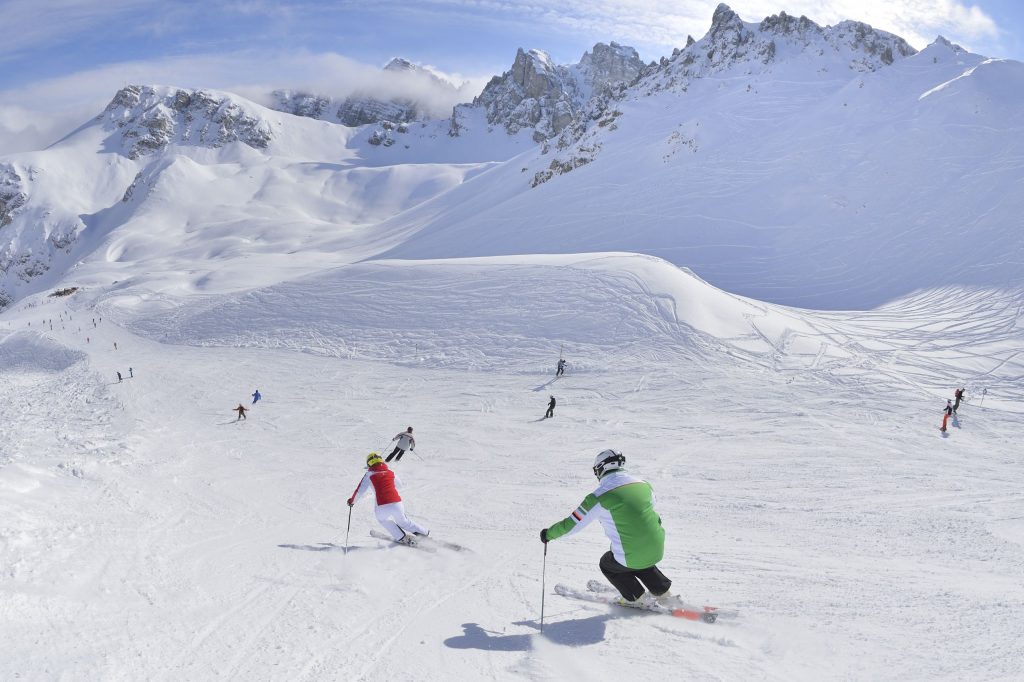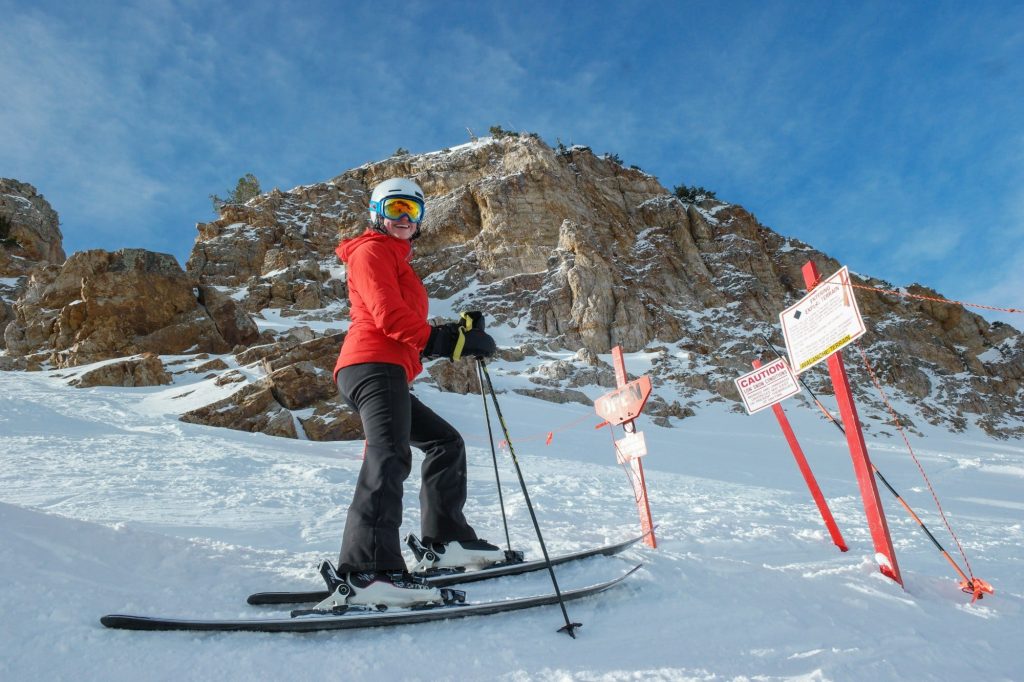The snow is finally starting to fall! Excited skiers start warming up their engines and run to unpack their skis. Whether you’re a regular skier or you’ve decided to take up this exciting discipline, you need a little physical preparation. It’s a fun, exciting sport in which you can enjoy nature and the sound of the snow under your boards with family or friends, but it also demands a lot from you.
So that you can make it to the last downhill without suffering from stiffness, injuries or getting exhausted right away, we give you 9 guidelines that will help you enjoy a perfect day of skiing. And if you’re disciplined, you’ll enjoy a season in top form.
This ski season has barely begun – albeit a little late – and we’re here to help you get up the mountain and glide down the white slopes like a pro. But for that, you need to prepare a little bit. Because as in all sports, you need to be aware of everything that each discipline involves and compromises your body.
We advise you to prepare yourself, but do not panic, there are some rabbits and some fitness tricks with which to tune your body to withstand the long days of skiing. These are the 9 guidelines to enjoy skiing while preventing injuries:

- Strengthen core and lower body.
Train the muscles that come into play while executing this sport discipline. The protagonists will be the lower body and trunk. You can strengthen them with these 5 simple exercises that work on the coordination between the legs and trunk:
- Squats with two feet supported, static for 20 seconds and dynamic.
- Squats with one foot supported and the other in the air to promote control and balance in a static position with different knee flexion or dynamically up and down.
- Work strength and balance on instability platforms to simulate unbalanced situations with squats, jumps and static jogging.
We will work the abdominals by raising the head with hands behind and feet on the floor, with head supported and raising legs to the ceiling (bending and stretching knees), or combining stretching legs and raising the head.
- Work all muscles and balance by bridging with the Pilates ball.
- Perform 2-3 sets of 10-15 repetitions, 3 times per week.
Always keep in mind the postural control offered by the Pilates method to avoid hurting yourself!
Important: Improve endurance with cardiovascular exercise such as elliptical and cycling 2-3 times per week for 20-45 minutes. Alternate these 2 exercises.
- Sleep at least 7 hours
Rest is essential because it allows the muscles and head to work in a coordinated way, improving resistance to fatigue and without the need to physically force yourself so much to be able to go down the slopes, which means you can enjoy every descent.
- Warm up on the track
Surely you have never thought about the need to do it even though in other sports you are already quite aware of it. But it is very important because “the cold slows down blood circulation and the muscle gains stiffness, so warm up in 2 minutes with”:
- mini squats.
- Swing weight forward and backward giving more support on heels or toes. (The boot should “crunch” when you put the weight forward, signaling that your weight is going forward and improving control when descending).
- Two-way knee circles with knees bent at 45-60º and together.
- Circles with the arms in front and behind from less to more amplitude. 5. Right and left trunk rotations and semi extended arms.
- Lift skis alternately on the spot.
- Use technical clothing
The technical part is important in any sport. Wearing technical clothing that keeps you warm and breathable is essential for the muscle to contract well. Thermal-breathable garments maintain body temperature, prevent sweat from getting on your clothes and leaving you cold, and produce a feeling of comfort and confidence.
- You are what you eat and drink
Hydration: You should hydrate regularly according to what your body asks for, and that is generally estimated at 2-3 liters of liquids a day (water, tea, coke ….).
Carrying a small bottle of water or isotonic drink is the most important thing to avoid dehydration and to prevent your muscles from getting exhausted. This way you can have a drink every few minutes.
Snacks: Nuts are a fantastic option because you can carry them in your pocket without taking up space and they provide you with quick energy and, at the same time, the minerals that your muscles constantly need such as potassium, magnesium and sodium.
Diet option: We tell you what your diet could be like on a day’s skiing.
Breakfast: Coffee or tea, with 2 or 3 slices of toast with olive oil, 100gr of ham or turkey.
Lunch: A broth, a sandwich and a chocolate bar. It is a snack of 20 minutes maximum to avoid getting cold.
Dinner: A plate of pasta, rice or vegetables and grilled steak.
Drink 2-3 glasses of water during the following hours after the end of the activity.
- Take care of your posture when skiing
Your arms should be slightly open and in front of your knees for balance, gently digging the pole into each turn to help you turn and control your speed.
Go forward by resting your shins on the shanks of your boots. This way your weight is stable. The trunk is facing downwards as the ski is turning.
The force with which you turn your legs is the one you transmit to the boot and with which the ski will turn, so make the movements smoothly. If you do it this way you will need much less force from your legs and back to be able to turn.
This reduces the risk of “getting stuck” and falling.
- Anticipate and control your falls
As we get older, we become more afraid of falling and this inevitably causes us to do sports with fear and even with a body stiffness that does not benefit us. To avoid falls, or if you do fall, to prevent them from being too big, Álvaro Blein recommends:
If it is an imbalance: put weight on one leg to try to regain position.
If it is a bump, and you lose control: try to lose speed in each turn until you stop.
Tip: It is better not to fall forward to avoid being hit in the head or thorax. Try to fall backwards or sideways and let go of the poles so you can land softer and stabilize yourself with your hands.
- Dose your effort
Take the first few warm-up descents to recover your body’s sensations. Be cautious and above all, use your head: stopping in time and ending the activity if you are tired often saves you a scare. If the muscles are loaded and you have had a near fall, concentration may fail.
Rest for a moment on one side of the track, so that you can descend well what is left.
On the last run you may be more tired, but this is not the time to show how well you can ski because it can play a trick on you. Your muscles will respond awkwardly to the snow, which is also heavier and looser.
- Relax your muscles
Just as you warm up and stretch when you run… so does skiing! Stretching afterwards relieves sore muscles and improves muscle condition for the next day.
Stretch your quads, hamstrings, adductors, calves, lower back, pectoral and neck for 30-40 seconds for each muscle to a powerful but tolerable end.

